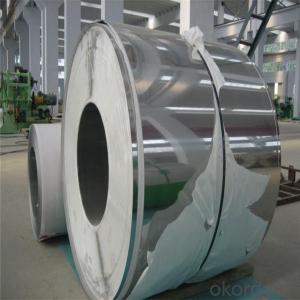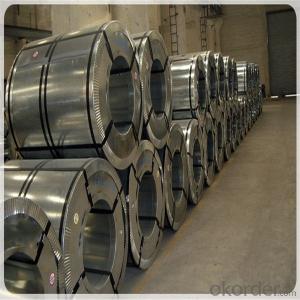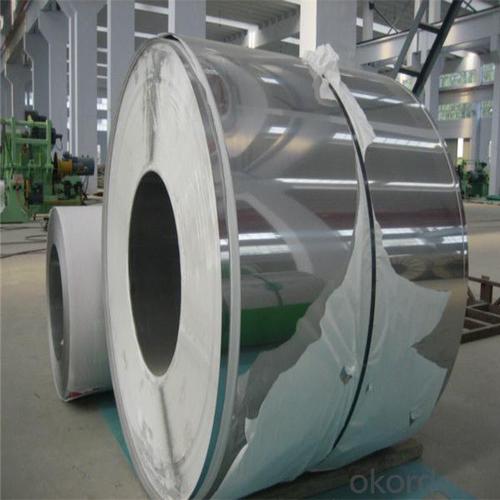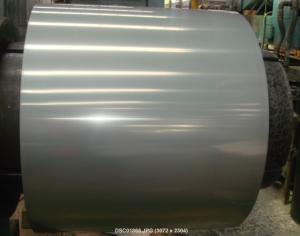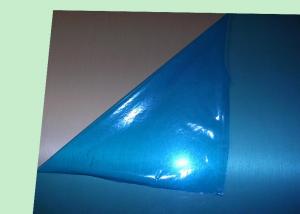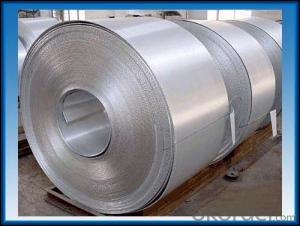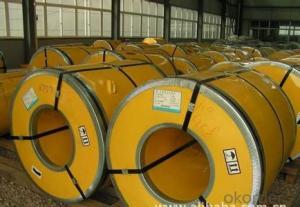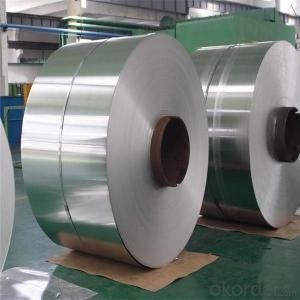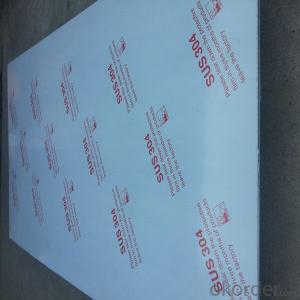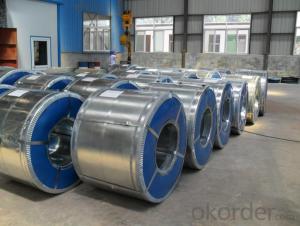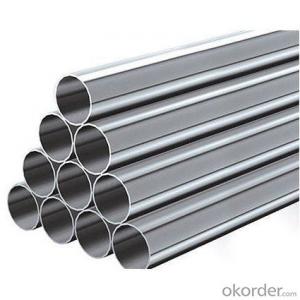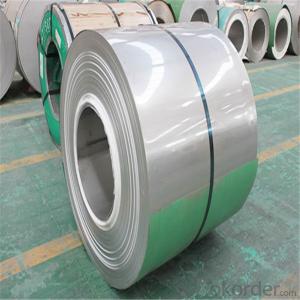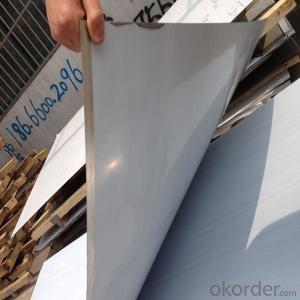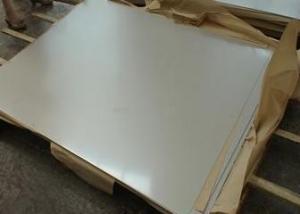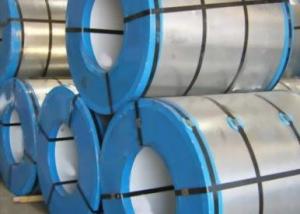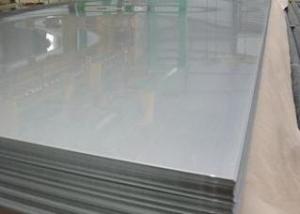Stainless Steel Coil Price Per Ton 321 Coil
- Loading Port:
- Shanghai
- Payment Terms:
- TT OR LC
- Min Order Qty:
- 2 m.t.
- Supply Capability:
- 180000 m.t./month
OKorder Service Pledge
OKorder Financial Service
You Might Also Like
Specification
stainless steel 321 coil/stainless steel coil 321
1. Detailed information
Product name | SUS321 stainless steel coil |
Specification | Thickness: Cold rolled: 0.3-3mm, Hot Rolled: 3-120mm Width: 500-2000mm Length: 1000-6000mm Customized sizes are accepted |
Standard | AISI, ASTM, EN, BS, GB, DIN, JIS, etc |
Finish | NO.1, 2B, BA, NO.3, NO.4, HL, 8K, etc |
Material | 201, 202, 304, 309S, 310S, 316, 316L, 410, 420, 430, 441, etc |
Brand Name | TISCO, BAOSTEEL, LISCO, JISCO |
Place of Origin | Jiangsu of China (Mainland) |
Technical treatment | Cold Rolled, Hot Rolled |
MOQ | 1 Metric Ton |
Port of Loading | SHANGHAI |
Terms of Delivery | FOB, CFR, CIF, CNF, EXWORK |
Terms of Payment | L/C, T/T (30% desipot) |
Packing | Standard export sea-worthy packing |
Delivery time | Within 7-15 days after recieve 30% desipot or as your requirement |
Stock | Ready in stocks |
2. Chemical composition
Grade | C ≤ | Si ≤ | Mn ≤ | P ≤ | S ≤ | Ni ≤ | Cr ≤ |
201 | 0.12 | 0.75 | 7.00 | 0.045 | 0.045 | 1.00-1.28 | 13.70-15.70 |
202 | 0.15 | 1.00 | 2.25 | 0.045 | 0.045 | 4.07-4.17 | 14.00-16.00 |
304 | 0.08 | 0.75 | 2.00 | 0.045 | 0.03 | 8.00-11.00 | 18.00-20.00 |
304L | 0.035 | 0.75 | 2.00 | 0.045 | 0.03 | 8.00-13.00 | 18.00-20.00 |
309 | 0.15 | 0.75 | 2.00 | 0.045 | 0.03 | 12.00-15.00 | 22.00-24.00 |
310S | 0.08 | 1.50 | 2.00 | 0.045 | 0.03 | 19.00-22.00 | 24.00-26.00 |
316 | 0.08 | 1.00 | 2.00 | 0.045 | 0.03 | 10.00-14.00 | 16.00-18.00 |
316L | 0.035 | 0.75 | 2.00 | 0.045 | 0.03 | 10.00-15.00 | 16.00-18.00 |
321 | 0.04-0.10 | 0.75 | 2.00 | 0.045 | 0.03 | 9.00-13.00 | 17.00-20.00 |
405 | 0.08 | 0.75 | 1.00 | 0.045 | 0.03 | 0.06 | 11.5-13.5 |
409 | 0.089 | 1.00 | 1.00 | 0.045 | 0.05 | 0.06 | 10.50-11.75 |
410 | 0.15 | 0.75 | 1.00 | 0.045 | 0.03 | 0.06 | 11.5-13.5 |
420 | 0.16-0.25 | 1.00 | 1.00 | 0.040 | 0.03 | 0.06 | 12.00-14.00 |
430 | 0.12 | 0.75 | 1.00 | 0.045 | 0.03 | 0.06 | 16.00-18.00 |
904L | 0.02 | 1.0 | 2.00 | 0.045 | 0.03 | 23.00-28.00 | 19.00-23.00 |
3. Finishings
| Surface | Definition | Application |
| NO.1 | The surface finished by heat treatment and pickling or processes corresponding there to after hot rolling. | Chemical tank, pipe. |
| 2B | Those finished, after cold rolling, by heat treatment, pickling or other equivalent treatment and lastly by cold rolling to given appropriate luster.
| Medical equipment, Food industry, Construction material, Kitchen utensils. |
NO.3 | Those finished by polishing with No.100 to No.120 abrasives specified in JIS R6001. | Kitchen utensils, Building construction |
NO.4 | Those finished by polishing with No.150 to No.180 abrasives specified in JIS R6001. | Kitchen utensils, Building construction, Medical equipment. |
HL | Those finished polishing so as to give continuous polishing streaks by using abrasive of suitable grain size | Building Construction. |
BA | Those processed with bright heat treatment after cold rolling | Kitchen utensils, Electric equipment, Building construction. |
8K | Shinning like a mirror | Building construction |
4. Product shows
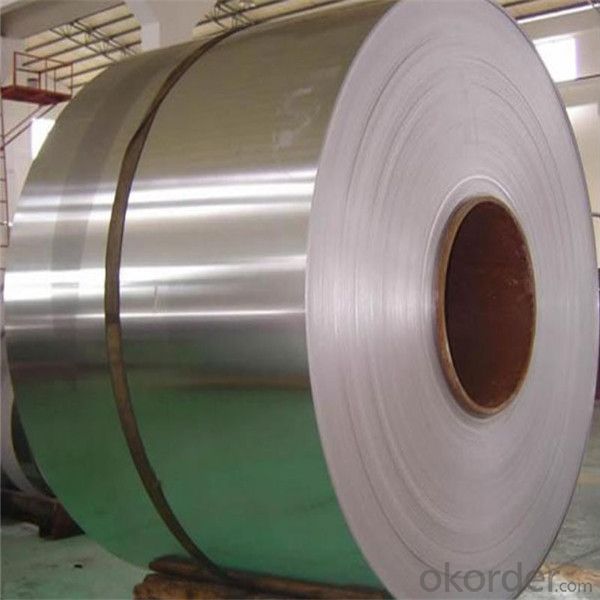

5. Application
With excellent corrosion resistance, strong impact resistance, stable quality, durable and novel structure and beautiful appearance, 321 stainless steel coil are widely used in architecture,construction, building structures, kitchenware, hardware, cutlery, tableware, surgical instruments,chemical, petroleum,sculpt.
6. Workshop
We can guarantee that our 321 stainless steel coil are always competitive, because we have advanced equipment, reliable service principle, scientific management and powerful research team.
7. Packaging&Transportation
We wrap the stainless steel products with outer packaging(edgeboard and wood footplate) and inner packaging (corrugated board or customized).
- Q: Why does stainless steel carry magnetism?
- Often use magnets to determine whether stainless steel magnet attracts people, that is the stainless steel, the stainless steel is impossible. It seems that the people of stainless steel as well as understanding the misunderstanding. In fact this is just the difference between austenitic stainless steel and other stainless steel has no magnetism.In general, austenitic stainless steel and austenitic stainless steel (non-magnetic magnet can not suck), there are other ferrite stainless steel, with the ferromagnetic (magnets attract). But they can not just use a stainless steel magnetic discrimination. For the stainless steel tube, no magnet up or not, as long as the quality standards are stainless steel.
- Q: Can stainless steel strips be used in chemical storage applications?
- Indeed, chemical storage applications can make use of stainless steel strips. With its exceptional resistance to corrosion and ability to endure exposure to a wide range of chemicals, stainless steel emerges as an outstanding option for secure chemical storage. Moreover, its durability, ease of cleaning, and impressive strength-to-weight ratio render it fitting for storing and transporting chemicals across diverse environments. The non-reactive characteristic of stainless steel guarantees the utmost purity of the stored chemicals, while its capability to withstand high temperatures further solidifies its appropriateness for chemical storage purposes.
- Q: What are the different types of surface finishes for stainless steel strips?
- Stainless steel strips usually undergo different types of surface finishes to improve their appearance, enhance their durability, and increase their resistance to corrosion. Below are some common finishes: 1. Mill Finish: The stainless steel strip is left in its original state after production, resulting in a non-reflective and dull appearance. It may have visible imperfections or marks from manufacturing. 2. No. 1 Finish: Also called HRAP (hot-rolled annealed and pickled), this finish involves annealing the stainless steel strip and pickling it in acid. It creates a smooth, reflective surface with a slightly matte look. No. 1 finish is frequently used in industrial applications where appearance is not a primary concern. 3. No. 2B Finish: Achieved by cold-rolling the stainless steel strip and subsequent annealing and pickling, this finish offers a bright, semi-reflective surface. It strikes a balance between appearance and corrosion resistance, making it suitable for kitchen appliances and architectural elements. 4. No. 4 Finish: Also known as brushed or satin finish, this finish is obtained by mechanically polishing the stainless steel strip with abrasive materials. It results in a smooth, matte appearance with fine parallel lines, giving it a brushed texture. No. 4 finish is commonly used for decorative purposes like furniture, elevator panels, and trims. 5. No. 8 Finish: Referred to as mirror finish, this finish is achieved by polishing the stainless steel strip to create a highly reflective surface. It has a mirror-like appearance with excellent reflectivity. No. 8 finish is often employed in architectural and decorative applications that require a polished, high-end look, such as signage, jewelry, and automotive trims. Apart from these primary surface finishes, there are also specialized finishes available for specific applications, such as embossed, patterned, and colored finishes. These finishes further enhance the aesthetic appeal and functionality of stainless steel strips in various industries.
- Q: Are stainless steel strips suitable for jewelry making?
- Indeed, stainless steel strips prove to be an ideal option for crafting jewelry. This material, known for its durability and versatility, exhibits remarkable resistance against tarnishing, rust, and corrosion, thus ensuring the longevity of the jewelry. Moreover, stainless steel possesses hypoallergenic properties, rendering it suitable for individuals with sensitive skin or allergies to metals. The flexibility of stainless steel strips facilitates their manipulation into diverse jewelry designs, encompassing rings, bracelets, necklaces, and earrings. Furthermore, stainless steel frequently serves as a cost-effective substitute for pricier metals such as silver or gold, enabling those with a desire for high-quality jewelry to acquire it at a more affordable price.
- Q: What is the difference between cold rolled and hot rolled stainless steel strips?
- The manufacturing processes and resulting properties of cold rolled and hot rolled stainless steel strips are different. To produce cold rolled stainless steel strips, the stainless steel is passed through a series of rollers at room temperature. This process creates a thinner and more precise strip with a smooth and shiny surface finish. Additionally, cold rolling strengthens and hardens the stainless steel, making it suitable for applications that require high strength and a polished appearance. Furthermore, cold rolled stainless steel strips have better dimensional accuracy and straightness compared to hot rolled strips. On the contrary, hot rolled stainless steel strips are manufactured by heating the stainless steel slab or billet to a high temperature and then rolling it through a series of rolling mills. This process results in a thicker and less precise strip with a rough and scaled surface finish. Hot rolling is preferred for applications that do not require a high level of precision or a polished appearance, such as structural applications or manufacturing processes that involve further shaping or forming of the stainless steel strip. Regarding properties, cold rolled stainless steel strips have higher tensile strength and yield strength than hot rolled strips. They also exhibit better corrosion resistance, as the cold rolling process refines the microstructure, reducing the presence of defects and impurities. However, hot rolled stainless steel strips have higher ductility and are more easily formable due to the higher temperature processing. In conclusion, the choice between cold rolled and hot rolled stainless steel strips depends on specific application requirements, such as the desired surface finish, dimensional accuracy, strength, and formability.
- Q: Are 111 stainless steel strips magnetic?
- Yes, 111 stainless steel strips are magnetic.
- Q: Are stainless steel strips suitable for industrial ovens?
- Yes, stainless steel strips are suitable for industrial ovens. Stainless steel is a highly durable and heat-resistant material that can withstand high temperatures typically found in industrial oven environments. It is also resistant to corrosion and oxidation, making it ideal for prolonged exposure to heat. Additionally, stainless steel strips are easy to clean and maintain, making them a practical choice for industrial oven applications.
- Q: What are the common lengths of stainless steel strips?
- The common lengths of stainless steel strips can vary depending on the specific application and industry. However, there are some standard lengths that are commonly available. These lengths typically range from 12 inches (30.48 cm) to 144 inches (365.76 cm) or 12 feet (3.66 meters). Stainless steel strips are often sold in standardized sizes to accommodate various uses, such as construction, manufacturing, or fabrication. These lengths allow for easy handling and transportation while providing flexibility for cutting or shaping as per the requirements of the project or application. It's important to note that custom lengths can also be obtained by requesting special orders from suppliers or metal fabricators. These custom lengths are often utilized when specific dimensions are needed to fit certain machinery, equipment, or architectural designs.
- Q: What are the factors affecting the machinability of 111 stainless steel strips?
- The machinability of 111 stainless steel strips can be influenced by various factors. 1) The chemical composition of the stainless steel, including the presence and ratios of different elements, can have a significant impact on its machinability. Elements like sulfur and phosphorus can form brittle compounds, making it more difficult to machine. Conversely, the addition of alloying elements like manganese, chromium, and nickel can improve machinability. 2) The hardness of the stainless steel strips can also affect their machinability. Harder materials require more cutting force and wear out cutting tools faster, making them more challenging to machine. On the other hand, softer stainless steel strips are generally easier to machine. 3) The microstructure of the stainless steel plays a role as well. The presence of certain phases, such as retained austenite or carbides, can impact chip formation and tool wear. The grain size and distribution within the material can also affect machinability. 4) The heat treatment applied to the stainless steel strips can influence machinability. Different heat treatment techniques, such as annealing, quenching, or tempering, can alter the material's hardness and microstructure, ultimately affecting how it can be machined. 5) Selecting appropriate cutting parameters is crucial for achieving good machinability. Factors such as cutting speed, feed rate, and depth of cut need to be optimized based on the specific stainless steel grade and its properties. Finding the right balance is essential for efficient and accurate machining. 6) The choice of cutting tools and their material composition and geometry can significantly impact the machinability of stainless steel strips. Tools with higher hardness, wear resistance, and suitable chip evacuation geometry are generally preferred for machining stainless steel. 7) Proper lubrication and coolant during machining operations can improve machinability. Lubricants reduce friction and heat generation, while coolants aid in chip evacuation and prevent tool wear. By considering these factors and optimizing the machining process accordingly, it is possible to enhance the machinability of 111 stainless steel strips and achieve the desired results.
- Q: Can stainless steel strips be used for cladding purposes?
- Yes, stainless steel strips can be used for cladding purposes. Stainless steel is known for its durability, corrosion resistance, and aesthetic appeal, making it a popular choice for cladding applications. Stainless steel strips can be easily installed on various surfaces, including walls, columns, and facades, to provide a protective and decorative covering. Whether it is for commercial, industrial, or residential projects, stainless steel strips offer a versatile and long-lasting solution for cladding purposes.
Send your message to us
Stainless Steel Coil Price Per Ton 321 Coil
- Loading Port:
- Shanghai
- Payment Terms:
- TT OR LC
- Min Order Qty:
- 2 m.t.
- Supply Capability:
- 180000 m.t./month
OKorder Service Pledge
OKorder Financial Service
Similar products
Hot products
Hot Searches
Related keywords
